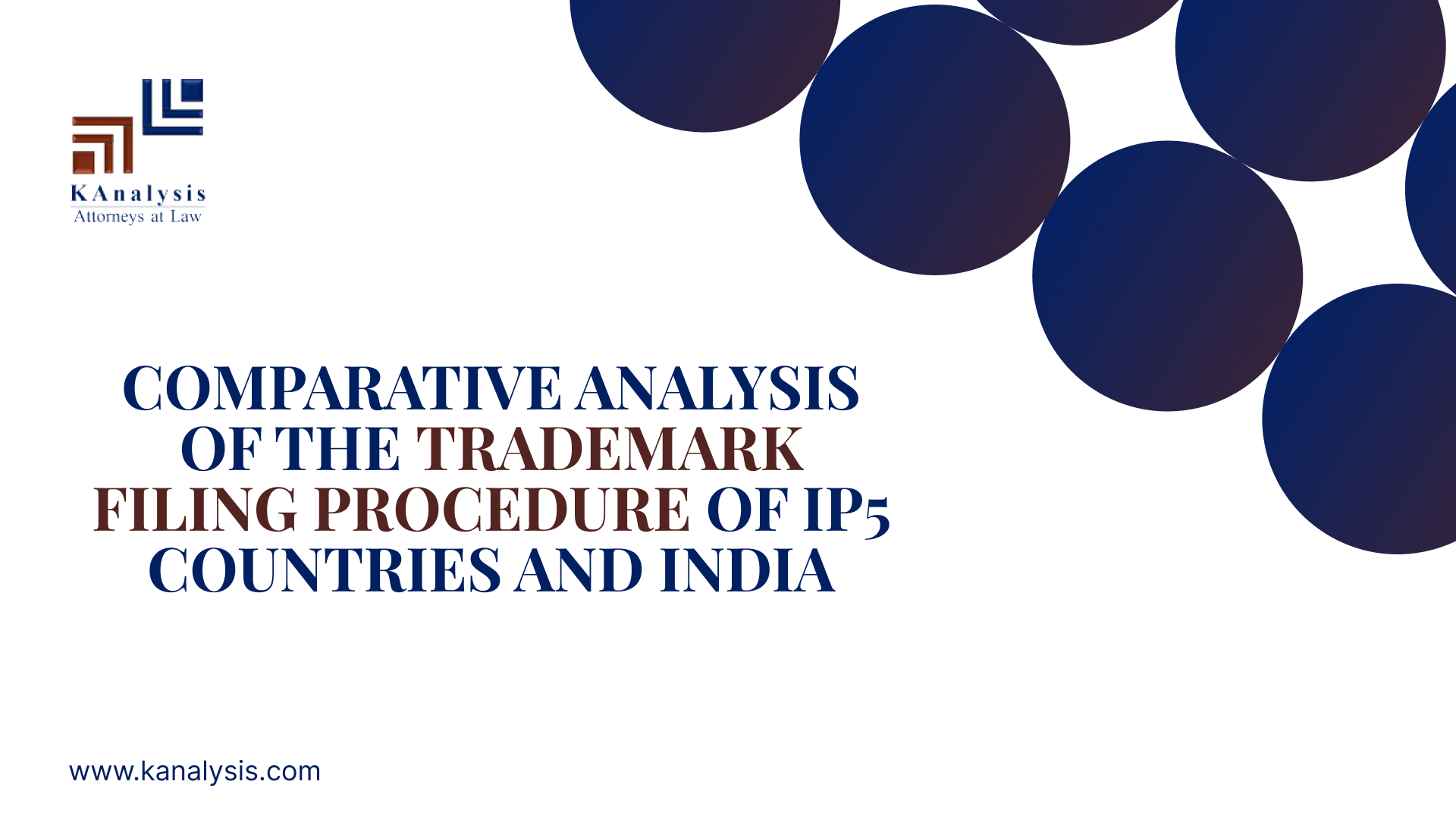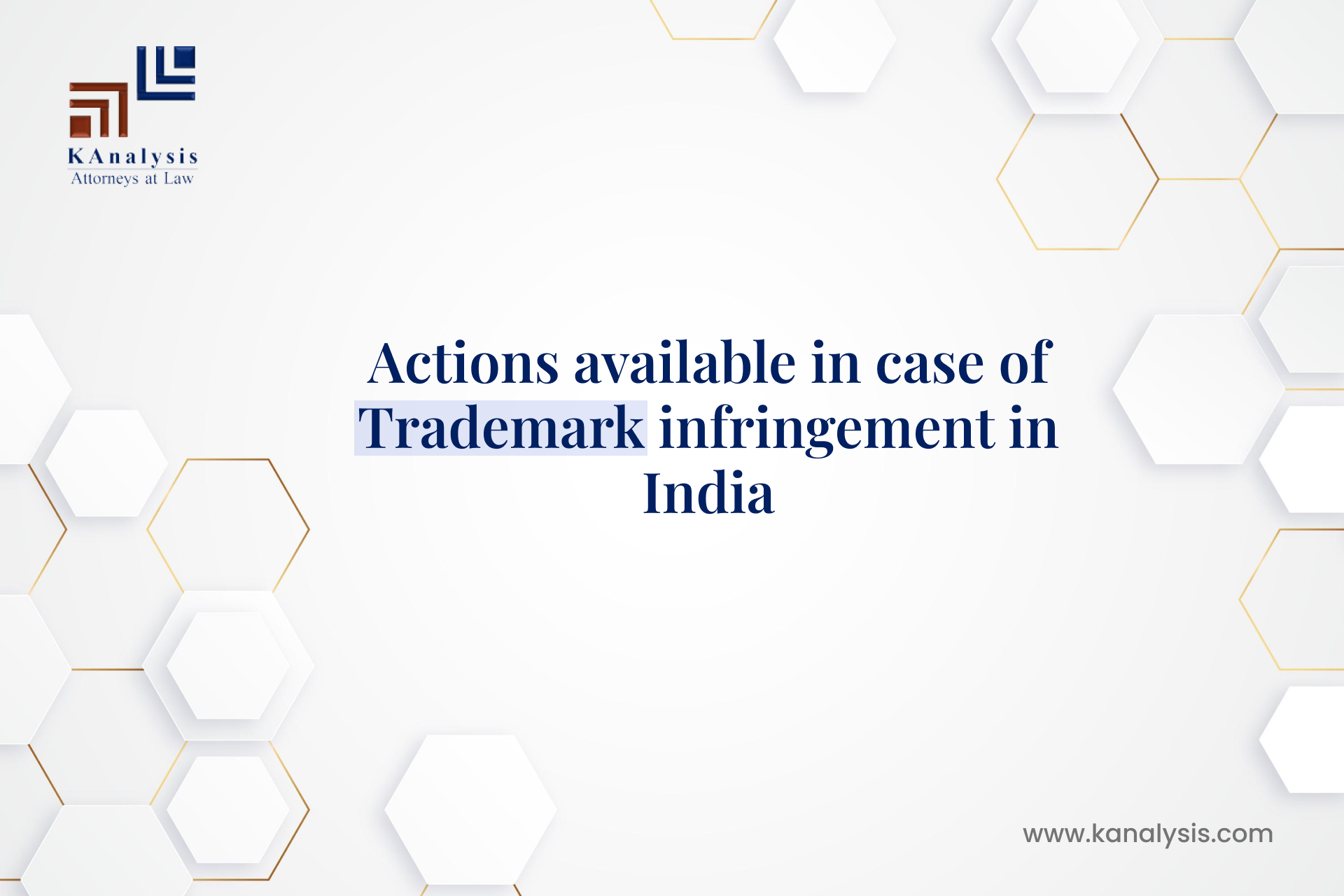World Intellectual Property Organization, established in 1967, is a specialized agency of the United Nations that promotes the use and protection of intellectual property (IP) rights around the world. WIPO provides a forum for governments and other stakeholders to discuss IP issues and develop international treaties and agreements that protect IP rights. One of the key areas that WIPO focuses on is the protection of trademarks. A trademark is a distinctive sign, symbol, or logo that identifies and distinguishes the goods or services of a particular company or organization. Trademarks are valuable because they help consumers identify the source of a product or service, and they help businesses build brand recognition and loyalty. WIPO also works closely with a group of five countries known as the IP5 (United States, Europe, Japan, China, and Korea) to develop and implement global IP policies and standards.
The IP5 countries collectively represent more than 80% of global patent activity. Around 65% of trademark filing worldwide was concentrated at just five offices in 2021. Their cooperation is crucial in ensuring that IP rights are effectively protected and enforced around the world. By working together, the IP5 countries are helping to ensure that innovation can continue to thrive and benefit people around the world, while also protecting the valuable IP rights that make it possible. Let’s take a look at the Comparative Analysis of the Trademark Filing Procedure of IP5 countries along with India.
| STAGES | BASIS | INDIA | JAPAN | EUROPE | KOREA | USA | CHINA |
| RULES & AUTHORITY | Legislation | Trade Marks Act 1999[1] | Trademark Act 1959[2]; Unfair Competition Prevention Act | European Union trade mark regulation (EUTMR)[3]; European Union trade mark delegated regulation (EUTMDR)[4] ; European Union trade mark implementing regulation (EUTMIR)[5] | Trademark Act[6] | Lanham (Trademark) Act (15 U.S.C.) [7] | Trademark Law of the People’s Republic of China[8] |
| Regulatory Authority | Office of the Controller General of Patents, Designs & Trade Marks[9] | Japan Patent Office[10] | European Union Intellectual Property Office[11] | Korean Intellectual Property Office[12] | United States Patent and Trademark Office[13] | China National Intellectual Property Administration (CNIPA)[14] | |
| Protection to unregistered Trademark/ Passing Off | Yes | No. (Only if ‘well-known’) | Yes | Yes | Yes | No. (Only if ‘well-known’)[15] | |
| Official Fees for Application | For company, Physical filing- 10,000; e-filing, 9,000[16] In MSME, for physical filing- ₹5000 for e-filing ₹4500 | ¥3,400 + ¥8,600 per classification[17] | First class €850, Second class €50, €150 for each subsequent class[18]. | KRW 62,000 ($165) per application, for the 1st class and KRW 2000 ($2) for each additional class[19] | TEAS Plus- $250 per class TEAS Standard $350 per class[20] | CNY 300 (Limited to 10 items of the chosen class. CNY 30 surcharge for each additional item) E-filing: CNY 270 (Limited to 10 items of the chosen class. CNY 27 surcharge for each additional item)[21] | |
| PRE-REGISTRATION | User date of Claim | -Date of claim -Proposed to be used | -Date of claim -Proposed to be used (within 3 years of registration) | -Date of claim -Proposed to be used (within 5 years of registration)[22] | -Date of claim -Intent-to-Use (within 3 years of registration)[23] | -Use-in-Commerce -Intent-to-Use[24] | -Date of claim -Intent-to-Use (within 3 years of registration) |
| Priority to Prior User | Applicable | Not Applicable (first to file) | Applicable | Applicable | Applicable | Not Applicable (first to file) | |
| Time period to Reply the Examination Report | Within 1 month[25] | Within 3 months (Extension of 1 month possible)[26] | Within 2 months (Extension of 2 months possible)[27] | No reply required. Either application accepted or rejected completely.[28] | Within 3 months (Extension of 3 months possible)[29] | Within 1 month[30] | |
| Publication for Third Party Opposition | At the Trademark Journal; 3 months’ time period (extendable) | At the trademark gazette; 2 months’ time period | At EU Trademark Bulletin; 3 months’ time period | At Official Gazette; 2 months’ time period | At the Official Gazette; 1 months’ time period (extendable) | At China Trademark Gazette; 3 months’ time period | |
| REGISTRATION | Official Fees for Application | For company, Physical filing- 10,000; e-filing, 9,000[31] In MSME, for physical filing- ₹5000 for e-filing ₹4500 | ¥3,400 + ¥8,600 per classification[32] | First class €850, Second class €50, €150 for each subsequent class[33]. | KRW 62,000 ($165) per application, for the 1st class and KRW 2000 ($2) for each additional class[34] | TEAS Plus- $250 per class TEAS Standard $350 per class[35] | CNY 300 (Limited to 10 items of the chosen class. CNY 30 surcharge for each additional item) E-filing: CNY 270 (Limited to 10 items of the chosen class. CNY 27 surcharge for each additional item)[36] |
| Priority to Prior User | Applicable | Not Applicable (first to file) | Applicable | Applicable | Applicable | Not Applicable (first to file) | |
| Time period to Reply the Examination Report | Within 1 month[37] | Within 3 months (Extension of 1 month possible)[38] | Within 2 months (Extension of 2 months possible)[39] | No reply required. Either application accepted or rejected completely.[40] | Within 3 months (Extension of 3 months possible)[41] | Within 1 month[42] | |
| Publication for Third Party Opposition | At the Trademark Journal; 3 months’ time period (extendable) | At the trademark gazette; 2 months’ time period | At EU Trademark Bulletin; 3 months’ time period | At Official Gazette; 2 months’ time period | At the Official Gazette; 1 months’ time period (extendable) | At China Trademark Gazette; 3 months’ time period | |
| Third party opposition opportunity | Before issuing Trademark Rights | After issuing Trademark Rights. | Before issuing Trademark Rights | Before issuing Trademark Rights | Before issuing Trademark Rights | Before issuing Trademark Rights | |
| Appellate body when application is rejected | High Court | Tokyo High Court[43] | Boards of Appeal at the EUIPO[44] | Intellectual Property Tribunal Appeal Board (IPTAB)[45] | Trademark Trial and Appeal Board (TTAB)[46] | Beijing Intellectual Property Court [47] | |
| POST- REGISTRATION | Rectification | Section 57, Trade Marks Act 1999[48] | Article 43[49] | Articles 58-60, 62, 64 of EUTMR; Articles 12-20 EUTMDR[50] | Article 73[51] | § 14 (15 U.S.C. § 1064[52] | Article 41[53] |
| Renewal | 10 years | 10 years | 10 years | 10 years | 10 years | 10 years |
CONCLUSION
In conclusion, the trademark filing process in IP5 countries involves several stages, from conducting a thorough trademark search to submitting the application and waiting for examination and registration. Each stage requires attention to detail and adherence to specific requirements and timelines. While the process may seem daunting, it is essential for businesses operating in IP5 countries to protect their brand identity and intellectual property. Trademarks provide legal protection against infringement, counterfeiting, and dilution, and can add significant value to a business.
Following observations can be made from the table:
- Every country has a specific legislation and authority dedicated to Trademark Filing.
- Remedy of Passing off, when the mark is not registered is available in most of the IP5 Nations and India as well, but not in Japan and China, unless the mark is well-known.
- In addition. Japan and China follow strict policy of ‘first to file’. This implies the legitimacy of trademark depends on ‘who filed it first’.
- The trademark filing status in each of these countries must be checked on regular basis to avoid the tedious, costly and time-consuming processes on missing deadlines of Replying Examination Report, Issuing Counter Statements, Renewal Applications etc. when obligatory.
It is crucial to work with experienced trademark attorneys who can guide businesses through the filing process and provide strategic advice on brand protection and enforcement. This includes identifying potential conflicts and developing an effective trademark strategy that takes into account business goals, industry trends, and legal considerations. Furthermore, businesses should also be aware of the differences between IP5 countries’ trademark systems and develop a tailored approach for each jurisdiction. This includes understanding the legal requirements, the scope of protection offered, and the costs associated with filing and maintaining trademarks.
[1] https://ipindia.gov.in/writereaddata/Portal/ev/TM-ACT-1999.html
[2] https://wipolex-res.wipo.int/edocs/lexdocs/laws/en/jp/jp180en.pdf
[3] https://eur-lex.europa.eu/legal-content/EN/TXT/?qid=1506417891296&uri=CELEX:32017R1001
[4] https://eur-lex.europa.eu/legal-content/EN/TXT/?uri=uriserv:OJ.L_.2018.104.01.0001.01.ENG&toc=OJ:L:2018:104:TOC
[5] https://eur-lex.europa.eu/legal-content/EN/TXT/?uri=uriserv:OJ.L_.2018.104.01.0037.01.ENG&toc=OJ:L:2018:104:TOC
[6] https://www.kipo.go.kr/upload/en/download/TrademarkAct.pdf
[7] https://www.uspto.gov/sites/default/files/trademarks/law/Trademark_Statutes.pdf
[8] http://www.npc.gov.cn/zgrdw/englishnpc/Law/2007-12/13/content_1384018.htm
[9] https://ipindia.gov.in/about-us-tm.htm
[10] https://www.jpo.go.jp/e/support/j_platpat/trademark_search.html
[11] https://www.euipo.europa.eu/en
[12] https://www.kipo.go.kr/en/HtmlApp?c=93000&catmenu=ek04_01_01
[13] https://www.uspto.gov/trademarks/basics/trademark-process
[14] https://english.cnipa.gov.cn/col/col3005/index.html
[15] https://link.springer.com/article/10.1007/s40319-013-0106-6#citeas
[16] https://ipindia.gov.in/form-and-fees-tm.htm
[17] https://www.jpo.go.jp/e/system/process/tesuryo/hyou.html
[18] https://euipo.europa.eu/ohimportal/en/eu-trade-mark-regulation-fees
[19] https://www.kipo.go.kr/en/HtmlApp?c=93006&catmenu=ek04_04_01
[20] https://www.uspto.gov/learning-and-resources/fees-and-payment
[21] https://english.cnipa.gov.cn/col/col3005/index.html
[22] https://guidelines.euipo.europa.eu/1803468/1785616/trade-mark-guidelines/1-1-function-of-proof-of-use
[23] https://www.kipo.go.kr/en/HtmlApp?c=30103&catmenu=ek04_02_01
[24] https://www.uspto.gov/trademarks/apply/intent-use-itu-applications
[25] https://ipindia.gov.in/administrative-steps-involved.htm
[26] https://www.jpo.go.jp/e/system/laws/rule/guideline/trademark/kijun/index.html
[27] https://euipo.europa.eu/ohimportal/en/web/guest/registration-process
[28] https://www.kipo.go.kr/en/HtmlApp?c=30103&catmenu=ek04_02_01
[29] https://www.uspto.gov/trademarks/maintain/responding-office-actions
[30] http://www.npc.gov.cn/zgrdw/englishnpc/Law/2007-12/13/content_1384018.htm
[31] https://ipindia.gov.in/form-and-fees-tm.htm
[32] https://www.jpo.go.jp/e/system/process/tesuryo/hyou.html
[33] https://euipo.europa.eu/ohimportal/en/eu-trade-mark-regulation-fees
[34] https://www.kipo.go.kr/en/HtmlApp?c=93006&catmenu=ek04_04_01
[35] https://www.uspto.gov/learning-and-resources/fees-and-payment
[36] https://english.cnipa.gov.cn/col/col3005/index.html
[37] https://ipindia.gov.in/administrative-steps-involved.htm
[38] https://www.jpo.go.jp/e/system/laws/rule/guideline/trademark/kijun/index.html
[39] https://euipo.europa.eu/ohimportal/en/web/guest/registration-process
[40] https://www.kipo.go.kr/en/HtmlApp?c=30103&catmenu=ek04_02_01
[41] https://www.uspto.gov/trademarks/maintain/responding-office-actions
[42] http://www.npc.gov.cn/zgrdw/englishnpc/Law/2007-12/13/content_1384018.htm
[43] https://www.jpo.go.jp/e/system/trademark/gaiyo/trademark.html
[44] https://euipo.europa.eu/ohimportal/en/web/guest/appeal
[45] https://www.kipo.go.kr/en/HtmlApp?c=93008&catmenu=ek04_06_01
[46] https://www.uspto.gov/trademarks/ttab
[47] https://english.cnipa.gov.cn/col/col3004/index.html
[48] https://ipindia.gov.in/writereaddata/Portal/ev/TM-ACT-1999.html
[49] https://wipolex-res.wipo.int/edocs/lexdocs/laws/en/jp/jp180en.pdf
[50] https://guidelines.euipo.europa.eu/1803468/1787334/trade-mark-guidelines/1-introduction-%E2%80%94-general-outline-of-cancellation-proceedings
[51] https://www.kipo.go.kr/upload/en/download/TrademarkAct.pdf
[52] https://www.uspto.gov/sites/default/files/trademarks/law/Trademark_Statutes.pdf
[53] http://www.npc.gov.cn/zgrdw/englishnpc/Law/2007-12/13/content_1384018.htm


